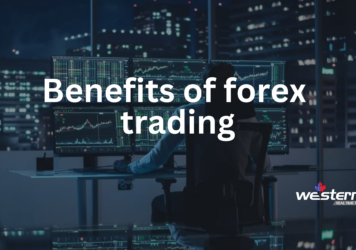Forex Market Definition
Today, it is the largest financial market that rarely sleeps. The volumes are spectacular – over $5 trillion US dollars worldwide, every day. This is more than for futures and equity combined. Here is how the fx market is defined and what parties it benefits.
What Is Forex Market
So, what is the Forex market and who does it engage? In this vast finance marketplace, participants sell or buy world currencies and speculate on their rates. The scope is global. There are both institutional and retail traders. The former include:
- banks (central and commercial),
- businesses,
- investment companies, and
- hedge funds.
The majority of all trades (roughly 85%) involve the US dollar. Two other most traded currencies are the Euro (39%) and the Japanese Yen (19%). Every transaction is double-sided, which explains why the figures do not add up to 100%.
Forex Market Fundamentals
This financial environment is more than a single exchange. It is a multifaceted network connecting traders and brokers around the world. Essentially, there are two different Forex markets. On the first level, currencies are traded by big banks on the interbank market.
The parties may act on their clients’ behalf or on their own. For them, the exchange is a means of hedging or balance sheet adjustment. This is the first Forex market meaning. In 2018, according to Greenwich Associates, the top five banks engaged in trading were:
- Citigroup,
- JPMorgan Chase & Co.,
- UBS,
- Deutsche Bank, and
- Goldman Sachs.
On the second level, currencies are traded by individuals in the over-the-counter (OTC) market. They buy and sell through brokers (intermediaries) via trading software (platforms). These participants are known as retail traders, and their activity accounts for a small share of daily volumes. For them, the Forex market meaning is more narrow: they aim to profit by trading currencies at the right time. Personal results depend on their financial foresight and knowledge of relevant financial trends.

Forex Trading Meaning
All currencies in the trade in Forex market are priced against one another, which is why trading is based on pairs. Generally, majors include liquid currencies valued against the US dollar. Minors are pairings without the USD, and exotics include money systems of emerging economies. For instance, the price for EUR/USD shows how many US dollars a single Euro will cost. Whatever the currency pair, the Forex trading meaning is the same.
Each currency combo has two interconnected values: the Ask price (valid for the buyer) and the Bid price (valid for the seller). As exchange rates are always changing, traders aim to buy or sell their currencies at the most favorable moment.
Subscribe to blog updates
You can receive notifications about new and interesting articles
Subscribe to news
Meanwhile, the broker may gain profit from the difference between Bid and Ask (known as ‘spread’). Some brokers are known as ‘market makers’ This means they set their own prices differently from the market rates.
When Is Forex Market Open?
The markets for commodities, bonds, or equities have their opening and closing times. On Forex, the activity never stops. It works 24 hours – somewhere in the world, currencies are bought and sold all the time. This is true for all pairings except for some exotic combinations. These include currencies from developing economies and they may close for a certain period during the trading day.
How It All Started
When did the Forex market appear? Over the decades, the foreign exchange market meaning changed. The Second World War transformed the perception of global finance flows. Until then, all currencies were linked to precious metals.

1944 saw the introduction of the Bretton Woods Agreement and System. As a result, the US dollar was now based on gold, while other systems were pegged to the value of the American currency. This created a unified global currency exchange regime.
In the 1970s, the system was abolished by President Nixon. Nations were now free to choose their own peg. Since then, the value of currencies has relied on supply and demand – i.e., the international Forex market. Its rates are affected by a wide range of events, from fiscal policies to geopolitics changes.
Today, this bustling marketplace works around the clock 5 days a week. Different national currencies are bought and sold by individuals and organizations. At any minute, currency exchange transactions are conducted somewhere on the planet.











